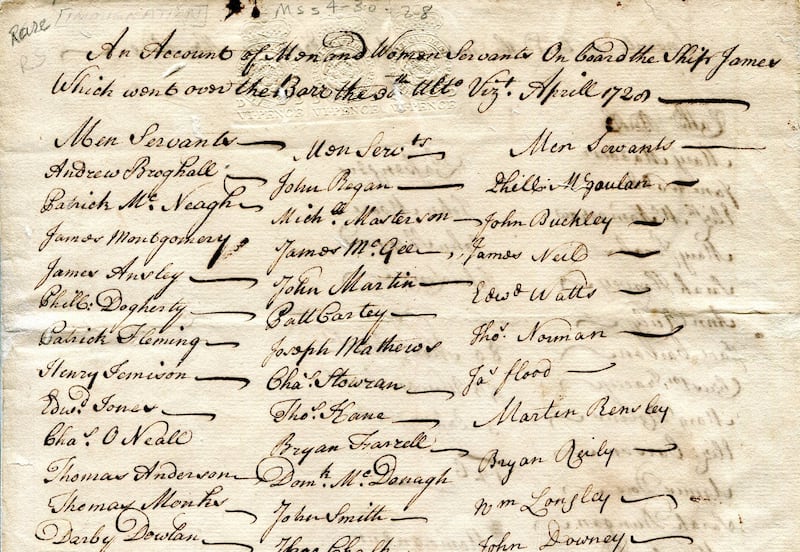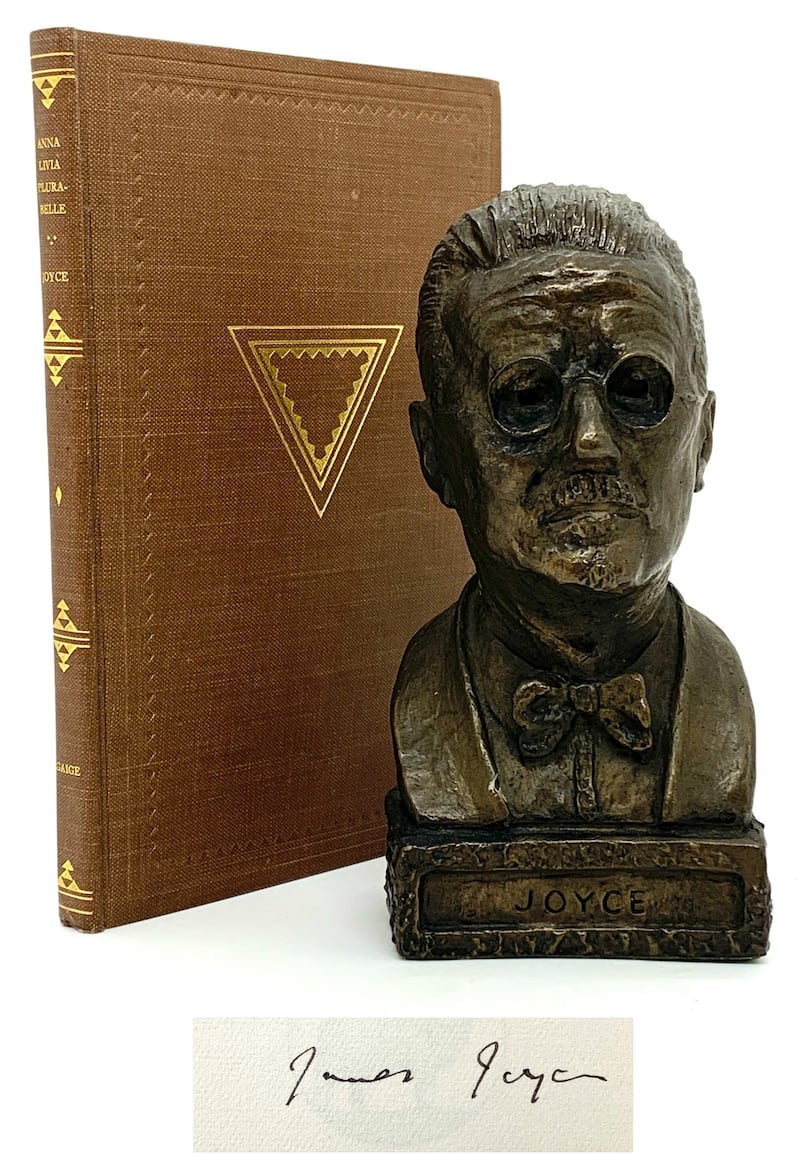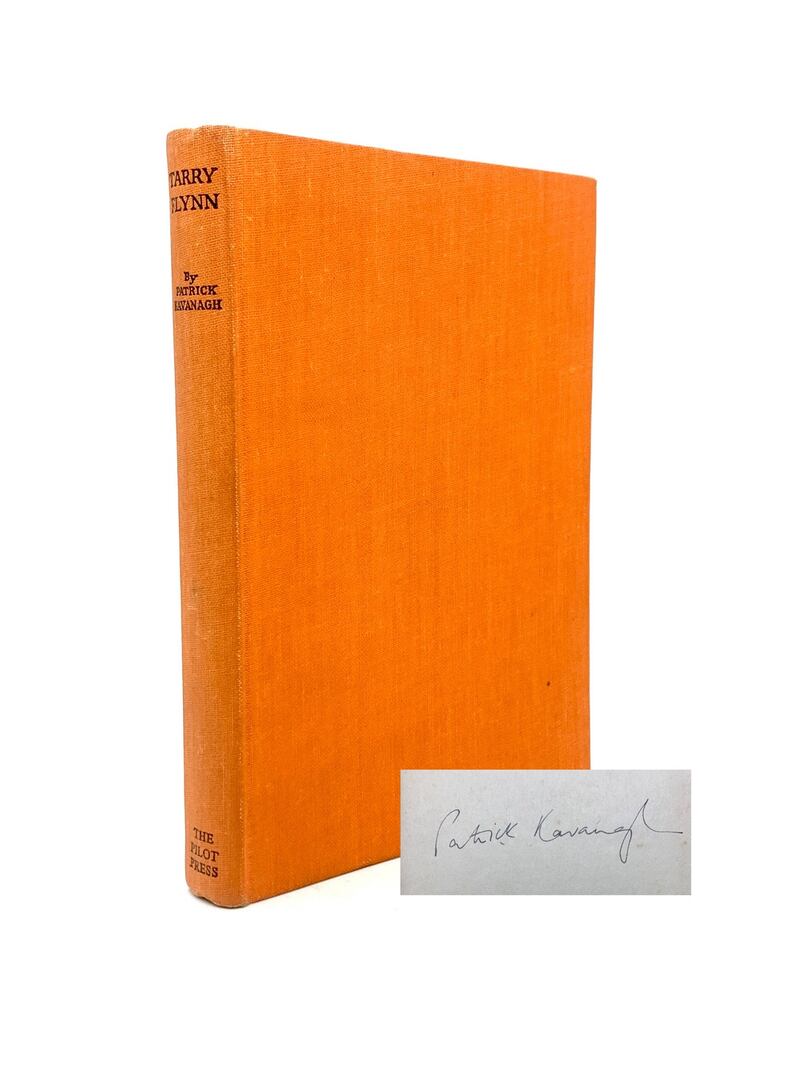“It’s a bit like the iPhone of the 18th century,” says Will de Búrca. He’s talking about the luscious-looking red and gilt bound Howth Castle copy of the Gentleman’s and Citizen’s Almanac, which features in De Búrca Rare Books’ most recent catalogue, 147.
Compiled in 1771, it would have been your go-to for useful and significant dates and times – from sunrise to moon phase, and from Dublin tide tables to “the marriages and deaths of the princes of Europe”.
“There are discussions,” says de Búrca, “as to who have been the best book binders of all time. Some say it was the French, but obviously I’m biased. The Irish Parliamentary book binders were amazing.”
He goes on to describe how the Civil War saw the destruction of so many of these books, that a copy such as this is extremely rare. There is a collection of similar volumes at Marsh's Library (marshlibrary.ie), while the provenance of this book, coming from Howth Castle, obviously adds to its value. It is priced at €3,865.
We might think that the mania for listing and cataloguing is a modern phenomenon, and given that the internet has rendered storage space for listings, facts and trivia more or less infinite, we certainly have the scope to do it. Nonetheless, it’s quite extraordinary to see what Samuel Watson, compiler of the Almanac, managed to get within the crimson morocco covers.
Discover too the names of judges, hospitals, roads and fairs, and even foreign postage charges. This was also the place to look for the “the names of the lord lieutenant; of his majesty’s most honourable privy council, and of the lords and commons of parliament”.
History tends to be good at wealthy people. It certainly excels at cataloguing kings, but conspicuously absent from the contents of Watson’s Almanac are the names of all those people who served and supported them. That’s one reason why another item from the catalogue is so fascinating: a manuscript list of men and women sailing to America on the ship James, departing on April 30th, 1728. Running to two pages, it includes a petition note from James Annesley to King George II.
Annesley himself is a well-known figure in history. Born in Co Wexford, he was kidnapped and sold into servitude on the orders of his wicked uncle, Richard Annesley, who wanted to clear the line of succession to the title of Earl of Anglesey – one of the wealthiest estates in Ireland.
James escaped, and the story of his exploits, en route home and after, are said to have inspired Robert Louis Stevenson’s epic swashbuckler Kidnapped. There was a lengthy court case (including accidental killing and claims of illegitimacy), and although James was awarded the estates and titles, he didn’t manage to actually get them before he died, at the age of 44. He is buried in an unmarked grave.

The listed names were all indentured servants. Back then, someone could be contracted, even against their will – as James was – to work without pay for a specific number of years. This could be in promise of money at the end of the term, as a judicial punishment, or in repayment of a debt. Indentures could be bought and sold, so once under one’s terms, you had no way of knowing who your master would be.
James Annesley’s own name appears on the list, four from the top, which is clearly why it survived. But it is also fascinating as a document of migration, either voluntary or for more sinister reasons, preserving the names of those who may otherwise have disappeared from record – including Joseph Matthews, Henry Jamison, John Buckley and more. Priced at €3,850, it has since been sold into a private collection.

Also in the De Búrca catalogue, and undoubtedly intriguing, given the centenary year that’s in it, is a copy of what De Búrca describes as a “flawless” binding of James Joyce’s Anna Livia Plurabelle (€5,850). It was one of a limited edition of 800, signed by the author and made to raise funds for what would go on to become Finnegans Wake.
“It was published in 1928, so it’s almost 100 years old. Joyce would have been totally renowned at that stage. The trial would have made him notorious, Americans would have hoovered him up.”

De Búrca also notes three signed books by Patrick Kavanagh, including Tarry Flynn from The Pilot Press, 1948 (€2,485). “We’ve only handled three other signed Kavanagh books in the last 30 years,” he says. “Some authors were out there, signing everything. Kavanagh? Not so much.”



















